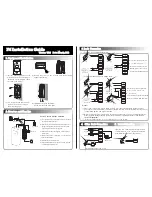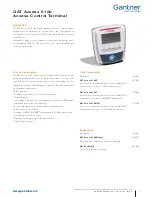
Lucent Technologies Lineage
®
2000 ECS-12 Controller J85501D-2
2 - 4 Product Description
Issue 3 August 1998
Basic
Controller
The basic ECS-12 controller monitors and controls up to twelve
Lucent Technologies switchmode rectifiers. The basic analog
control functions of the ECS-12 are described in detail in the
paragraphs that follow.
Operating
Voltage
The controller is powered by the plant dc voltage and may be
used in 24V or 48V plants. It may be powered from either
positive ground systems, e.g., -48V, or negative ground systems,
e.g., +24V. Movable jumpers located on the backplane are
positioned according to the plant voltage. The 113B may be
plugged directly into any controller with a properly configured
backplane. Each different plant voltage requires a different
LVD/Fuse Board (CP5).
Batteryless
Operation
The ECS-12 controller is suitable for telecommunications power
plants with or without batteries. In batteryless plants, the loss of
ac power causes an immediate loss of dc power to the controller.
When ac power is restored, the ECS-12 controller, in an
unpowered state, allows the rectifiers to automatically restart.
IMPORTANT
When the controller loses power, it also loses the ability to
detect alarm conditions in the plant. To prevent the danger
of unreported alarms, all Power Major and Power Minor
alarms are automatically issued when the controller is
powered down.
Rectifier Sense
Leads
Separately fused sense leads run from the external LVD/Fuse
Board to the rectifiers via the rectifier multiplexer board
(BCC1). These leads are not interrupted when the 113B is
removed. The rectifiers use the sense leads to maintain the plant
bus voltage independently of any load-dependent voltage drop
between their output terminals and the bus.
Office Alarm
Contacts and
Alarm Battery
Supply
Alarm contacts are provided on the 113B that may be connected
to the office alarm system by the installer. (See Section 4,
“Wiring.”) Each set of contacts is a Form C or transfer type, i.e.,
a combination of normally open and normally closed contacts
with one side of each in common. The normally open contact is
referred to as O (other applications may call this the NO
contact), the normally closed contact is referred to as C (other
applications may call this the NC contact). The common or
return contact is referred to as R (other applications may call this
















































